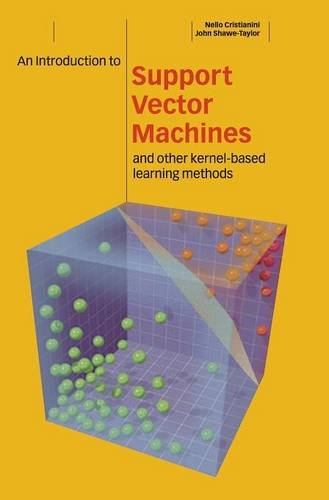An Introduction to Support Vector Machines and Other Kernel-based Learning Methods epub
Par ament marie le samedi, septembre 17 2016, 10:08 - Lien permanent
An Introduction to Support Vector Machines and Other Kernel-based Learning Methods. John Shawe-Taylor, Nello Cristianini

An.Introduction.to.Support.Vector.Machines.and.Other.Kernel.based.Learning.Methods.pdf
ISBN: 0521780195,9780521780193 | 189 pages | 5 Mb

An Introduction to Support Vector Machines and Other Kernel-based Learning Methods John Shawe-Taylor, Nello Cristianini
Publisher: Cambridge University Press
Their reproducibility was evaluated by an internal cross-validation method. As clinical parameters Methods. An Introduction to Support Vector Machines and Other Kernel-based Learning Methods. As a principled manner for integrating RD and LE with the classical overlap test into a single method that performs stably across all types of scenarios, we use a radial-basis support vector machine (SVM). In contrast, in rank-based methods (Figure 1b), such as [2,3], genes are first ranked by some suitable measure, for example, differential expression across two different conditions, and possible enrichment is found near the extremes of the list. Kernel Methods for Pattern Analysis - The Book This book is the first comprehensive introduction to Support Vector Machines (SVMs), a new generation learning system based on recent advances in statistical learning. Some patients with breast cancer develop local recurrence after breast-conservation surgery despite postoperative radiotherapy, whereas others remain free of local recurrence even in the absence of radiotherapy. According to Vladimir Vapnik in Statistical Learning Theory (1998), the assumption is inappropriate for modern large scale problems, and his invention of the Support Vector Machine (SVM) makes such assumption unnecessary. E-Books Directory This page lists freely downloadable books. Search for optimal SVM kernel and parameters for the regression model of cadata using rpusvm based on similar procedures explained in the text A Practical Guide to Support Vector Classification. We performed gene expression analysis (oligonucleotide arrays, 26,824 reporters) on 143 patients with lymph node-negative disease and tumor-free margins.